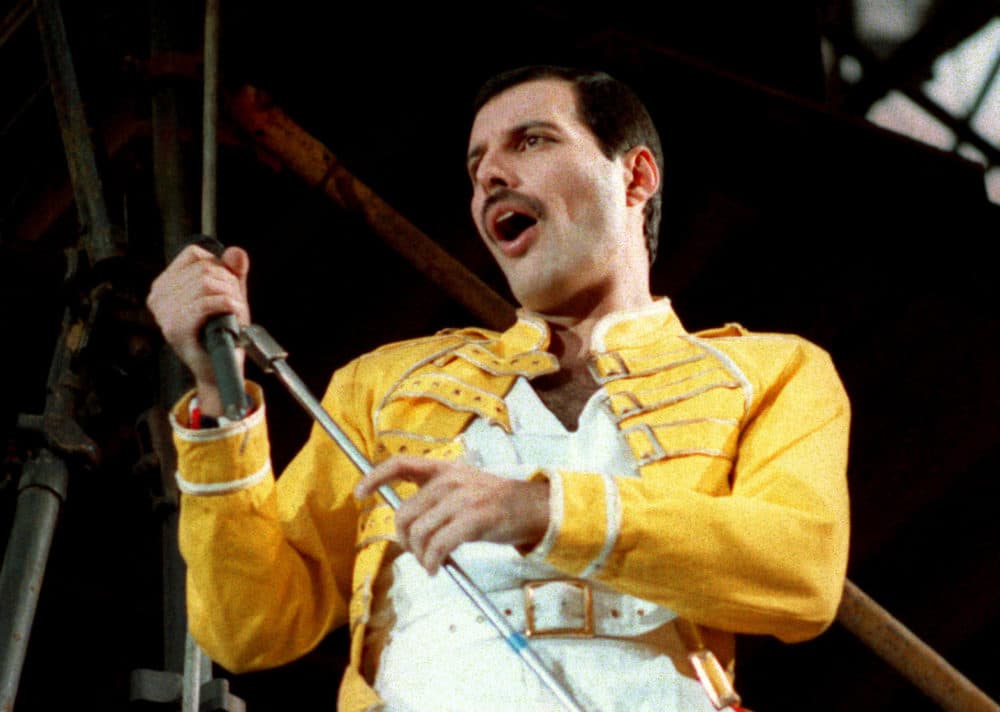Advertisement
Commentary
Why 'Bohemian Rhapsody' Is One Of The Most Masterful Recordings Of Our Time

"Is this the real life? Is this just fantasy?" It's been 43 years since that unmistakable opening first verse filled the radio airwaves. "Bohemian Rhapsody" is probably one of the most recognizable recordings ever made. Even a few seconds from any of the six main sections is enough to recognize it.
With a new biopic on Freddie Mercury named for the song, much is being said about the singer's mastery that brought him to the top. And it's worth taking a closer look at how the combination of Mercury's range control and improved recording technologies and production make "Bohemian Rhapsody" one of the masterpieces of our times.
The singer had an impressive 37 semi-tone vocal range, but Mercury's pitch range was not the most important aspect of his voice. His dynamic and timbral range, and his control of these aspects of his voice were far more important. Mercury had a broad performance style perfectly suited to the increasingly complex studio productions of the 1970s. He seemingly had a complete mastery of his voice, from the loudest to the most quiet performance intensities, and from the purest to the most pressed, harsh vocal tones. It is this quality that places him in the most elite group of vocal performers in the history of recording production.
We take for granted a huge range of vocal performance intensity (the musical dynamics or loudness of the performance when recorded) and timbre (sound quality) in modern recordings. These are key aspects in the expressive range we expect in a good recording of a song — and it’s an area in which the increasing sophistication in production techniques in the recording studio are evident.
By the 1970s, the studio practice was to run repeated “takes” of a vocal performance to get the range of timbres and dynamics for the desired expression while also achieving an appropriate level of performance accuracy. The various takes were composited, or “comped” from multiple takes, phrase by phrase, even word by word. In modern studios, we have the benefit of digital audio systems, but back then, this was still done with multitrack tape.
Like a screen actor, the vocalist must deliver a range of performances, all with an ear toward the final edited product. The changes in loudness from the range of performance intensity during recording are controlled with dynamics processors and mixing. The changes in timbre are kept in an aesthetically desirable range with various signal processors and recording techniques.
Through the judicious use of these technologies, a broader range of expression is available, and the vocalist and producer can make artistic use of that broader palette. The result is an idealized “performance” representing the artistic vision and technical expertise of a team of co-creators.
In “Bohemian Rhapsody,” the combination of Mercury’s expressive range and interpretive genius, Roy Thomas Baker’s production, and the technical mastery of a team of engineers results in a powerful interpretation of Mercury’s song. Mercury delivers a huge range of emotions, conveyed with significant changes in timbre and performance intensity. It is as if he has considered the expressive qualities of each and every phrase, even each word.
We hear an example in the first verse of the ballad. In a single lyrical phrase, “Mama, life had just begun, but now I’ve gone and thrown it all away,” Mercury goes from a wistful, vulnerable pure tone to a tense and pressed timbre. The effect is that of a moment of nostalgia in the narrator giving way to a dramatic lament at his current situation. Continuing, Mercury delivers a full-throated forte as the intensity grows through the lyrics: “Mama, didn’t mean to make you cry. If I’m not back again this time tomorrow…” His voice just barely breaks at the peak on “tomorrow,” before yielding as the narrator tells his mother that she should “carry on, carry on as if nothing really matters.” The gradual and deliberate build from “Life had just begun” to the climax at “tomorrow” and the falling action of "carry on" spans about 30 seconds, in what emerges as a single expressive gesture covering a broader range than many entire songs. And we aren’t even at the opera section yet…
Of course, Mercury did not work in a vacuum. His performance relied on the available tools of his day: multitrack recording, dynamic range compression, use of automation in mixing (a very early example), and most importantly, a talented producer and capable engineers who knew how to use technology in service of an artistic vision. Taken as a whole, Mercury’s performance on “Bohemian Rhapsody” presents an incredibly refined artistic statement, with an expressive performance that is almost cinematic.
Brandon Vaccaro is an assistant teaching professor of music and the coordinator of the Sound Recording Technology program at UMass Lowell.
